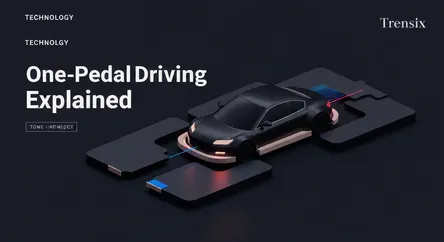Technology
One-Pedal Driving Explained

Discover one-pedal driving, the EV feature using regenerative braking to slow down. Learn how it simplifies driving and boosts energy efficiency.
What is it?
One-pedal driving is a mode available in most modern electric vehicles (EVs) that allows the driver to accelerate and decelerate using only the accelerator pedal. When you press the pedal, the car speeds up. When you lift your foot, the car immediately begins to slow down by engaging strong regenerative braking. This system captures the kinetic energy that would normally be lost as heat during braking and converts it back into electricity to recharge the battery. In many situations, this allows the vehicle to slow to a complete stop without the driver ever touching the brake pedal, which is reserved for sudden stops or emergencies.
Why is it trending?
As electric vehicle adoption skyrockets, one-pedal driving has become a signature feature that defines the modern EV experience. Automakers market it as a more intuitive, efficient, and relaxing way to drive, particularly in dense, stop-and-go city traffic. It maximizes the benefits of an electric powertrain by significantly increasing the amount of energy recaptured through regenerative braking. This process can extend the vehicle's driving range, a key selling point for consumers, making it a popular and highly sought-after feature in new EV models.
How does it affect people?
For drivers, one-pedal driving simplifies the control of the car, reducing the physical effort of constantly moving a foot between two pedals. This can lead to a less fatiguing and smoother driving experience once the short learning curve is overcome. It also promotes a more engaged driving style, as drivers learn to modulate the accelerator for precise speed control. Economically, it extends driving range, saving on charging costs, and reduces wear and tear on the traditional friction brake pads, leading to lower maintenance expenses over the vehicle's lifetime.